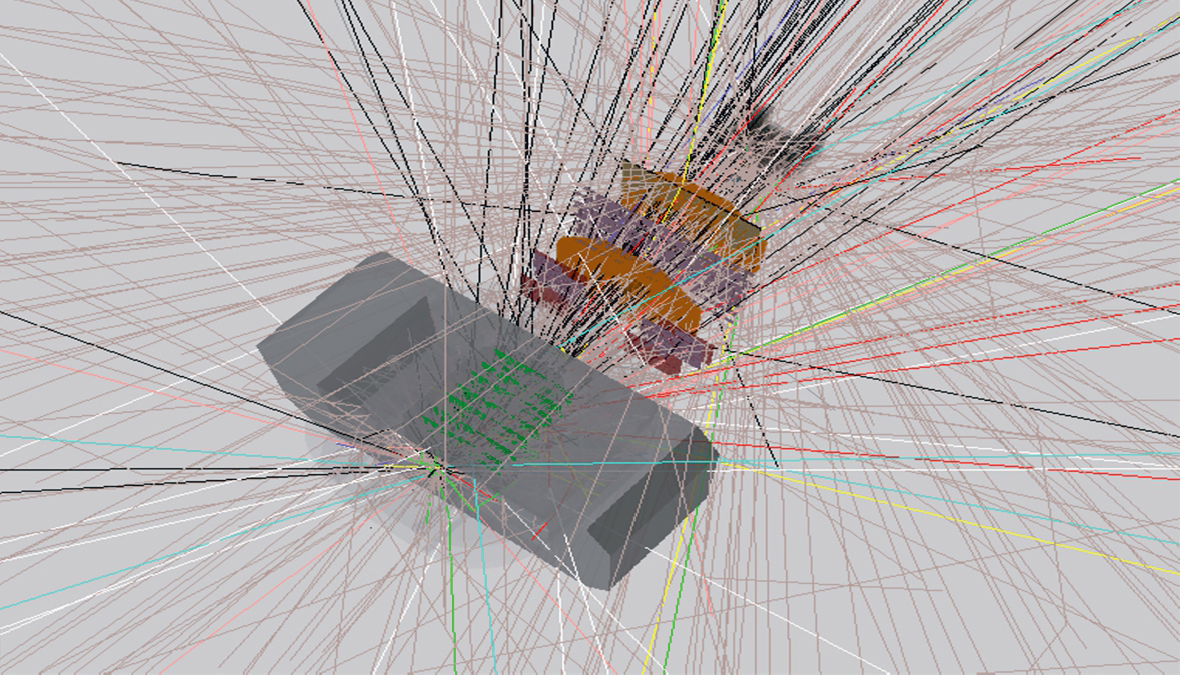Analysis of particle tracks in BM@N Experiment at NICA in mathematical model of fractal thermodynamics
News, 18 July 2024
Specialists from the Joint Institute for Nuclear Research and Tver State University (TSU) studied the fractal properties of the emerging particle tracks in the BM@N Experiment. The article was published in the third issue of Physics of Elementary Particles and Atomic Nuclei in 2024.
After computer processing of the simulated data from the BM@N detectors used in the experiment, an analysis of the emerging particle tracks was carried out using the mathematical model of fractal thermodynamics. It is demonstrated that there is a good agreement between the data obtained in the BM@N and LHC Experiments over a wide range of heavy ion beam energies (from 2.7 GeV/nucleon to 2.51 TeV/nucleon) and the results of the analysis using the mathematical model of fractal thermodynamics.
 Computer reconstruction of particle tracks emerging from the interaction of a xenon heavy ion beam with a cesium target
Computer reconstruction of particle tracks emerging from the interaction of a xenon heavy ion beam with a cesium target
The full version of the article about the research made by TSU scientists with the participation of Deputy Director of the Laboratory of Information Technologies Nikolay Voytishin is available via the link.